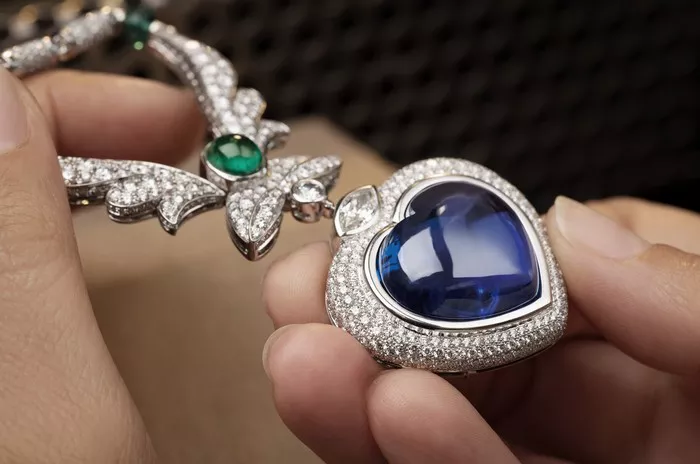Sapphires are among the most prized gemstones in the world, renowned for their stunning beauty, durability, and rarity. While sapphires come in a variety of colors, including blue, pink, yellow, and green, some are more valuable than others due to their rarity, size, and quality. In this article, we will explore the factors that determine the value of sapphires and identify which type of sapphire is the most expensive.
Understanding Sapphires
Sapphires belong to the corundum mineral family, which also includes rubies. While rubies are red corundum, sapphires encompass all other colors within the corundum spectrum. Blue sapphires are the most well-known and sought-after variety, but sapphires can also occur in a range of colors due to trace elements present during their formation.
Sapphires are valued based on several factors, including color, clarity, cut, and carat weight. The most desirable sapphires exhibit a rich, vivid hue with excellent clarity and a well-proportioned cut that maximizes their brilliance and beauty. Larger sapphires with exceptional color and clarity command higher prices due to their rarity and visual impact.
Factors Affecting Sapphire Value
Color: The color of a sapphire is the most significant factor in determining its value. In general, intense, vivid hues are more desirable and valuable than pale or washed-out colors. Blue sapphires with a deep, velvety blue hue are particularly prized, especially if they exhibit a uniform color distribution with no zoning or color banding. Pink, orange, and padparadscha sapphires (a rare pink-orange variety) are also highly sought after, especially if they display a vibrant, saturated color.
Clarity: Clarity refers to the presence of inclusions or flaws within the sapphire. While most sapphires contain some degree of internal characteristics, those with minimal inclusions and excellent transparency are considered more valuable. Sapphires with few visible inclusions and high clarity are rare and command premium prices, especially in larger sizes.
Cut: The cut of a sapphire plays a crucial role in maximizing its brilliance and beauty. Well-proportioned cuts that enhance the stone’s natural color and minimize light leakage are highly desirable. Sapphires that are cut too shallow or too deep may appear dull or lifeless, reducing their value. Precision-cut sapphires with excellent symmetry and polish command higher prices due to their superior sparkle and overall visual appeal.
Carat Weight: Carat weight refers to the size of the sapphire and is a significant factor in determining its value. Larger sapphires are rarer and more valuable than smaller ones, especially if they exhibit exceptional color, clarity, and cut. However, the price per carat tends to increase exponentially as sapphire size increases, making larger stones significantly more expensive on a per-carat basis.
Which Sapphire Is the Most Expensive
While all sapphires are valuable gemstones, some varieties command higher prices due to their rarity, color, and demand in the market. The following are some of the most expensive types of sapphires:
Kashmir Sapphire: Kashmir sapphires are renowned for their exquisite velvety blue hue, often described as “cornflower blue.” Mined in the Kashmir region of India (now part of Pakistan) in the late 19th and early 20th centuries, these sapphires are highly coveted for their intense color and exceptional clarity. Due to their scarcity and historical significance, Kashmir sapphires command some of the highest prices among all gemstones.
Burma (Myanmar) Sapphire: Burma (Myanmar) has long been a significant source of high-quality sapphires, particularly those with a rich, royal blue color. Burmese sapphires are prized for their intense color saturation, often with a slightly purplish or violet undertone. Fine Burmese sapphires exhibit a velvety texture and exceptional clarity, making them highly sought after by collectors and connoisseurs.
Padparadscha Sapphire: Padparadscha sapphires are a rare and exquisite variety known for their delicate pink-orange hue, reminiscent of a tropical sunset. The name “padparadscha” is derived from the Sinhalese word for lotus blossom, reflecting the stone’s unique coloration. True padparadscha sapphires are rare and highly prized for their distinctive color and exceptional rarity.
Ceylon (Sri Lanka) Sapphire: Sri Lanka, formerly known as Ceylon, is one of the world’s oldest and most prolific sources of sapphires. Ceylon sapphires are prized for their wide range of colors, including blues, pinks, yellows, and oranges. Blue sapphires from Sri Lanka are renowned for their clarity, brilliance, and vivid hues, making them highly valued in the global gemstone market.
Australian Sapphire: Australia is a significant source of sapphires, particularly in the New South Wales region. Australian sapphires come in a variety of colors, including blue, green, yellow, and parti-colored (multicolored). While Australian sapphires may not command the same prices as their Kashmir or Burmese counterparts, they are valued for their vibrant colors, large sizes, and accessibility.
Star Sapphire: Star sapphires are a unique variety known for their mesmerizing asterism, a phenomenon that causes a six-rayed star to appear when the stone is illuminated. This optical effect is caused by needle-like inclusions of rutile or hematite within the sapphire crystal structure. Star sapphires come in various colors, with blue and black star sapphires being the most common. Fine-quality star sapphires with a sharp, well-defined star and attractive color command premium prices due to their rarity and visual appeal.
Conclusion
While all sapphires are valued for their beauty, durability, and rarity, certain varieties command higher prices due to their exceptional color, clarity, and historical significance. Kashmir sapphires, with their velvety blue hue, are among the most coveted and expensive gemstones in the world, followed by Burmese, padparadscha, Ceylon, Australian, and star sapphires. Ultimately, the value of a sapphire depends on a combination of factors, including color, clarity, cut, carat weight, and market demand, with each variety offering its unique allure and charm to collectors and enthusiasts alike.


